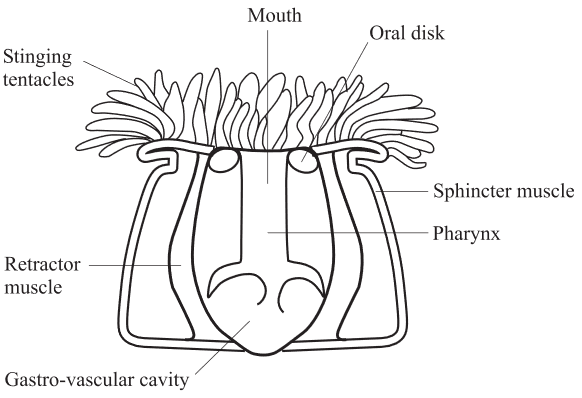Read the given passage and answer the following question:
Sea anemones look like plants, but they actually are predatory animals. They are invertebrates, which means that they do not have a skeleton. To protect themselves, they will attach to firm objects on the sea floor, such as rock or coral.
Sea anemones can alter their body shape according to changes in their environment. For example, when ocean currents are strong, the sea anemone will reduce its internal volume in order to decrease the surface area that is exposed to the current. Sea anemones are dependent on water flow for food and nutrients and also for assistance in eliminating waste.
Most anemones share a symbiotic relationship with marine algae called zooxanthellae. These are photosynthetic organisms whose waste products are a food source for the sea anemone. The sea anemone also enjoys a mutualistic relationship with the clownfish. This fish is immune to the stinging tentacles of the sea anemone, and it helps the anemone by actually cleaning the tentacles. The cleaning process yields food for the clownfish, while it remains protected from potential predators by the sea anemones stinging tentacles.
The figure given below shows a cross-section of portions of the internal anatomy of a sea anemone.

According to the given figure, the sea anemone’s mouth is located:
According to information in the passage, the sea anemone benefits from the presence of:
Which of the following statements about the sea anemone is supported by the passage?
The sea anemone most resembles:
Suppose that a strong storm stirred up the water in which a sea anemone was living. The sea anemone’s response would most likely be:
As shown in the figure, the part of the sea anemone’s anatomy that connects its mouth to its gastrovascular cavity is the: